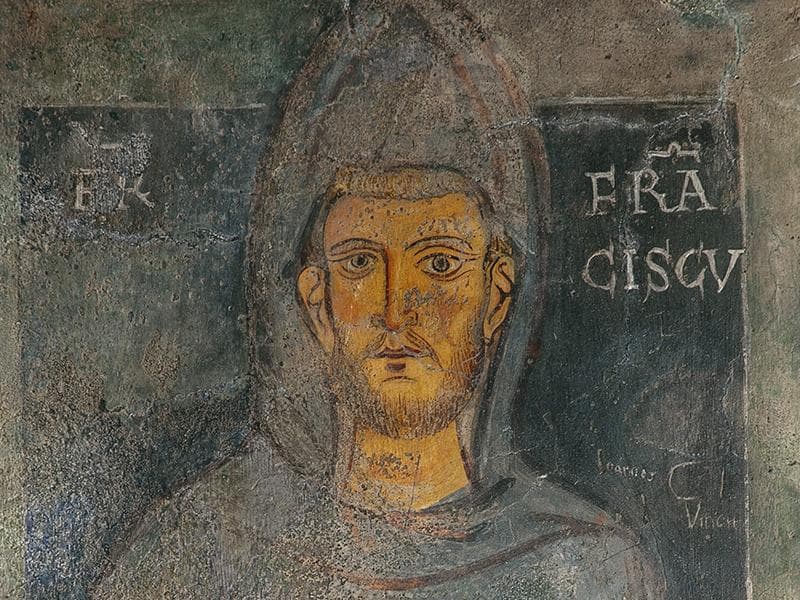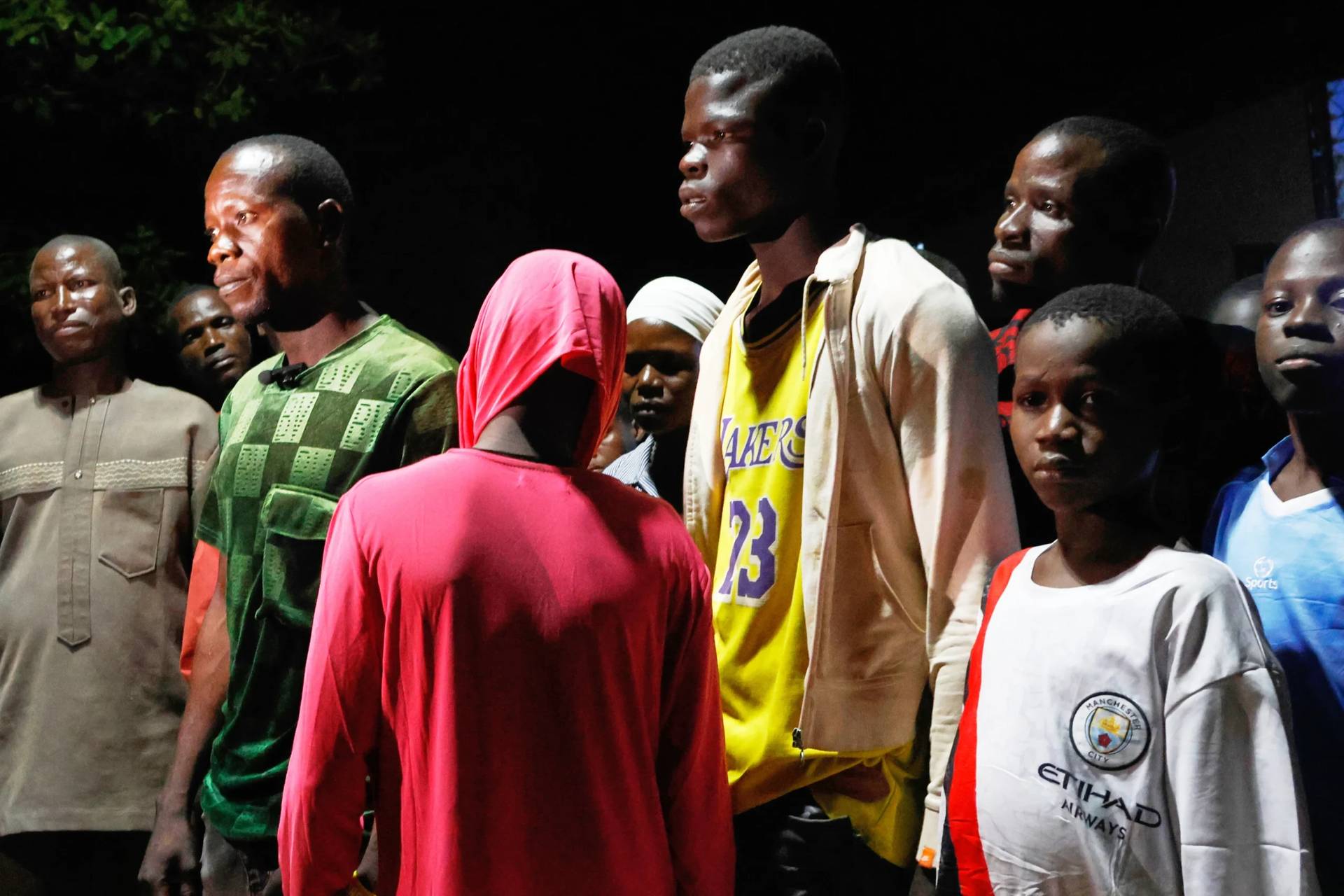ROME – For the past 11 years, a certain class of Catholic pundits and provocateurs has made a nice living by pitting Benedict v. Francis. In so doing, they’ve deepened the battle lines in the Church, encouraging fragmentation, division, and heartache.
For all those complicit in peddling that narrative, I have a suggestion to make: A penitential pilgrimage to the small hillside Italian community of Subiaco, about an hour and half east of Rome. There lies a unique invitation to change perspective and, just possibly, to cleanse the soul.
Located on the banks of the Aniene river and at the feet of Italy’s lower Appenine mountains, it was here that a young Roman noble named Benedict of Norcia sought refuge from a crumbling world in the early 6th century. According to tradition, he spent three years living as a hermit in a cave in Subiaco, having his meager food lowered to him on a rope by a monk named Romanus, then went on to found 13 monasteries in the region before relocating further south down the Italian peninsula to Monte Cassino.
Five centuries later, monks following Benedict’s famous rule decided to honor their founder by building a monastery on the site of his retreat, which is now known as the Sacro Speco, or “holy cave.” Eventually the monastery would consist of two churches, one upper and the other lower, along with multiple small chapels, all carved out of the rock that formed the cave in which Benedict lived.
In 1223, as part of the dedication of the new complex, Cardinal Ugolini di Conti, then dean of the College of Cardinals and the future Pope Gregory IX, was invited by the Benedictine community of Subiaco to consecrate the altar of a new chapel located on the level of the lower church. (It’s now called the “Chapel of Gregory” in his honor.)
Di Conti made the trek, and he brought along a special guest – a 42-year-old mystic, poet and founder of a brand new religious family named Francis of Assisi. The two were friends, as di Conti had become the ecclesiastical protector of the new Franciscan order in 1220 at Francis’s personal request. He would eventually canonize Francis in 1228, just two years after the saint’s death.
To commemorate the visit, an unknown artist painted an image of Francis on one of the walls of the new chapel. Because it was executed while Francis was still alive, it does not feature the halo typical of images of saints, and because it was painted before 1224, it also does not show Francis with the stigmata he acquired only in that year. Adding to the verisimilitude, it depicts Francis with stitches on one eye, reflecting treatment for the trachoma he developed during a trip to the Middle East in 1219-1220, which would eventually leave him virtually blind.
The fresco is absolutely singular because it’s the earliest image of Francis in existence, showing the saint as he really was – thereby allowing future generations the closest thing possible to actual physical contact. My wife Elise and I recently had the opportunity to stand before it at length, all by ourselves, on a quiet Monday morning, and I can testify that it’s a deeply evocative experience. Afterwards, we purchased a reproduction of the image and had it blessed by the priest who was on duty that morning, a kindly Italian Benedictine named Don Maurizio.
My point is this: There is a special kind of meaning in the fact that the world’s most precious image of St. Francis has been conserved, protected and cherished for the last 800 years by the sons of St. Benedict.
The Sacro Speco, in other words, is physical confirmation that the link between Benedict and Francis in Catholic life is genetic, inextricable and eternal.
Yes, the monastic and the apostolic instincts represented by Benedict and Francis are different. The former is fundamentally about conservation and preservation of the faith, the latter about innovation and experimentation to bring the faith to the world. In Chesterton’s famous phrase, “What Benedict stored, Francis scattered.”
The point, however, is that for the faith to be scattered, it must first be stored – and, of course, the whole point of storing it is precisely so that it may be scattered. To put the point differently, Benedict without Francis would be incomplete, and Francis without Benedict would be impossible.
Thus far, we’ve been speaking about the two saints, but the same insight applies to the two popes of the last 11 years who bear their names.
Yes, Pope Benedict XVI was more “conservative” in many ways than Pope Francis. Seen through a Catholic (as opposed to political) lens, however, that’s not opposition, it’s fulfillment.
Catholicism is not, as Benedict XVI famously reminded the world in an address to clergy of the Italian dioceses of Belluno-Feltre and Treviso in 2007, an either/or tradition. Rather, Catholicism is both/and – a matter “not of great exclusions, but of syntheses,” Benedict said.
Of course, none of this is to deny that there are rival camps in Catholicism, some of which claim either Benedict or Francis as their champion. That’s a fact as plain as potatoes. The point is that in making such claims, those camps are missing — or, what’s worse, deliberately flouting — something essential about the Catholic instinct.
Neither is it to deny that both Benedict and Francis have been imperfect pontiffs, making their fair share of debatable decisions, some of which actually may have fed the perception that they represent contending (as opposed to complementary) options.
The crucial point, however, remains: From the very beginning, Benedict and Francis have been the conjoined twins of Catholic spirituality, different in many respects but each unviable without the other. Efforts to split them apart, whether we’re talking saints or popes, end up doing damage to both.
In a nutshell, that’s the lesson of Subiaco. It’s one which a small, but highly vocal and agitated, band of Catholic opinion today would do well to absorb.

















